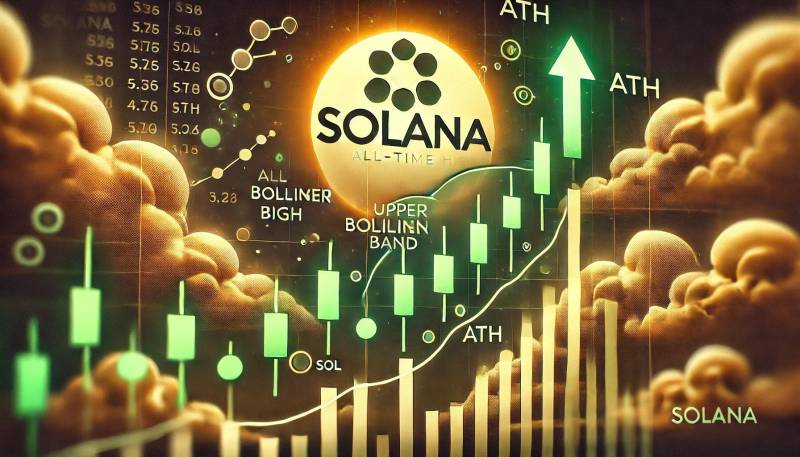 |
|
 |
|
 |
|
 |
|
 |
|
 |
|
 |
|
 |
|
 |
|
 |
|
 |
|
 |
|
 |
|
 |
|
 |
|
Cryptocurrency News Articles
US SEC Defines Covered Stablecoins, Excluding Algorithmic Tokens
Apr 06, 2025 at 08:03 pm
The SEC stablecoin guidance, issued on April 4, confirms that some tokens are not securities. The United States Securities and Exchange Commission defined these as covered stablecoins.

The US Securities and Exchange Commission (SEC) has confirmed that some tokens are not securities in its new stablecoin guidance, issued on April 4.
These are defined as covered stablecoins. Such tokens must be fully backed by US dollars or liquid, low-risk assets, and allow holders to redeem them 1:1 for dollars. These US dollar-backed stablecoins are also exempt from transaction reporting rules under securities law.
However, not all stablecoins qualify. Tokens backed by algorithms, software models, or any type of yield-bearing system are excluded.
The new stablecoin regulations prevent issuers from mixing user reserves with company funds. Reserves must remain separate and cannot be used for market trading or lending. The SEC also blocked issuers from paying interest, profit, or yield to holders.
Only covered stablecoins that meet all the SEC’s criteria are recognized under this exemption. These tokens must be backed either by physical fiat currency or short-term US Treasury Bills. They must avoid any financial activity involving user funds.
The SEC stablecoin guidance did not include algorithmic stablecoins or synthetic dollars, which continue to face uncertainty in the US regulatory system. The agency focused only on asset-backed models.
Issuers cannot promise any return to holders and are prohibited from using reserve assets to earn revenue. These rules apply to both existing issuers and any new firms that plan to issue US dollar-backed stablecoins in the future.
The SEC confirmed that no onchain interest or yield-bearing fiat tokens are permitted under the current guidelines. Covered stablecoins are limited to functioning as digital equivalents of fiat currency.
The SEC stablecoin guidance aligns with efforts in Congress, where two proposals—GENIUS Act and Stable Act of 2025—support a similar structure for stablecoins. Both bills aim to secure the role of US dollar-backed stablecoins in the global financial system.
The GENIUS Act, introduced by Senator Bill Hagerty, and the Stable Act of 2025, by Representative French Hill, require full backing and no profit-sharing, aligning with the new SEC definitions for covered stablecoins.
Both bills encourage the use of regulated banks to store reserves, which must include US dollar deposits or short-term US government debt, a priority also reflected in the new SEC framework.
According to the guidance, issuers must remain fully transparent and avoid any financial operations with reserve funds, such as trading, lending, or investing activities.
US Treasury Secretary Scott Bessent spoke about stablecoin regulations at the White House Digital Asset Summit on March 7, stating that regulating stablecoins is a priority for the current administration's agenda.
Bessent highlighted that stablecoins are part of the administration’s broader strategy for digital assets, and the US government will use stablecoins to support the global position of the US dollar, including using US dollar-backed stablecoins to boost demand for US Treasuries.
The Treasury views these tokens as tools to extend dollar use in digital markets, a position supported by the SEC stablecoin guidance with its strict rules for reserve-backed tokens.
The data shows the scale of adoption—Tether, the largest stablecoin issuer, holds more US Treasuries than countries like Canada, Germany, or South Korea, directly connecting the stablecoin ecosystem with US debt markets.
Disclaimer:info@kdj.com
The information provided is not trading advice. kdj.com does not assume any responsibility for any investments made based on the information provided in this article. Cryptocurrencies are highly volatile and it is highly recommended that you invest with caution after thorough research!
If you believe that the content used on this website infringes your copyright, please contact us immediately (info@kdj.com) and we will delete it promptly.
-

-

- With US President Donald Trump imposing 104% tariffs on Chinese imports, Beijing is responding by letting the yuan weaken against the dollar
- Apr 09, 2025 at 04:25 am
- With US President Donald Trump imposing 104% tariffs on Chinese imports, Beijing is responding by letting the yuan weaken against the dollar — a move that analysts say
-

-

-

-

-

-

- Base, a Layer 2 Solution Built on Ethereum, Surpasses Its Parent Chain in Total Value Locked
- Apr 09, 2025 at 04:10 am
- This achievement marks a notable shift in the Ethereum ecosystem. Layer 2 solutions such as Base are improving Ethereum’s scalability and demonstrating their ability to outperform the networks they are built on.
-



























































